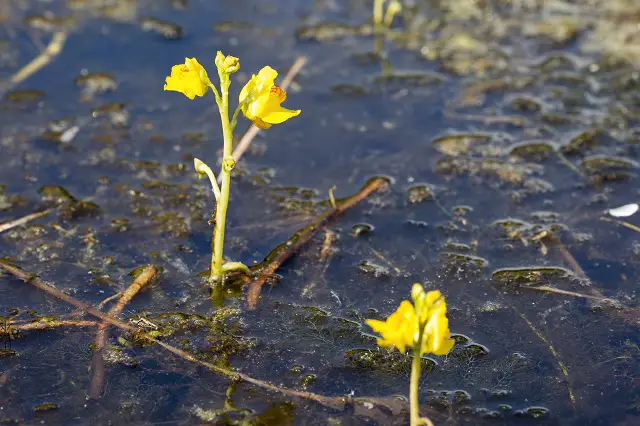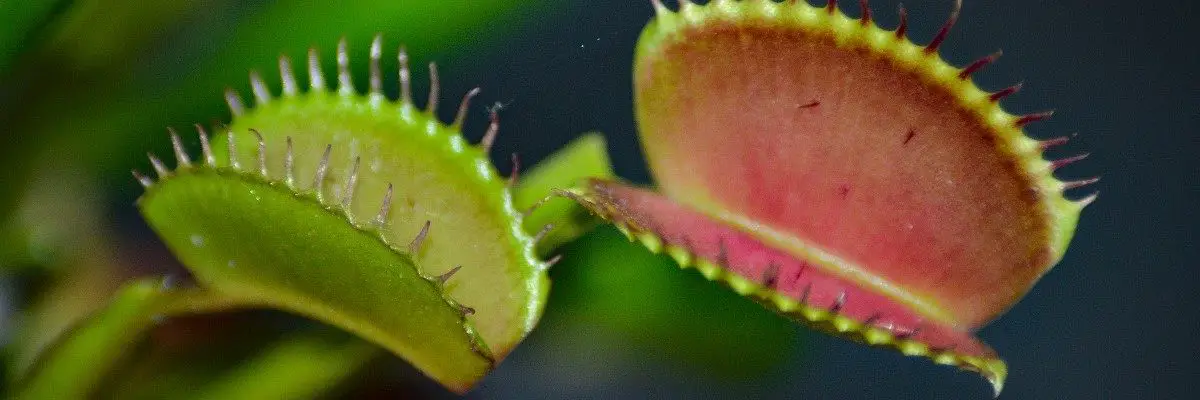A plant that is a carnivore is one that will capture, kill, and digest organisms. Although they usually catch, eat, and digest insects, some larger species can also eat mice, birds, and fish. While carnivorous plants still use photosynthesis to obtain energy, they supplement their diets with meat to ensure they are getting the nutrition they require. There are several ways that plants are able to attract their prey’s attention, including using color, fragrance, or nectars -although some even glow in the dark to attract their prey’s attention.
Upon catching the interest of the potential meal, the carnivorous plant springs its trap. Among the five methods of trapping prey are:
| Snap traps: These traps have leaves that open and snap closed as soon as the prey is inside. |
| Pitfall traps: The leaves of a pitcher-shaped plant trap insects falling inside them. |
| Lobster-pot traps: The plant has openings that allow the prey to enter, and it then traps the prey with bristles or hairs to hold it in place. |
| Bladder traps: Using a bladder, the plant pulls the meal into the plant and traps it with water. |
| Flypaper traps: In order to capture small insects on leaves, a sticky substance is secreted. |
Because they tend to live in areas with poor soil quality, they must supplement their diet by consuming insects, proteins, and fats from the animals they digest.
How Do Sundews – Flypaper Trap Work?
The Sundew Plant traps insects on its sticky leaves and hairs on these leaves, thus getting the name of flypaper trap. In fact, they form one of the bigger families of carnivorous plant species. The leaves of each plant sprout long tentacles. Each tentacle has a gland that produces the sticky substance at its tip. Due to their glistening appearance, these drops are known as dew droplets.
Besides nectar, these glands also produce powerful adhesives to catch prey and chemicals to digest them. Insects become stuck when nearby tentacles wrap around them and smother them. It is possible for sundews to grow to up to ten inches.
Some species grow long, tall, and vine-like, whereas others will grow along the ground, thus producing a wide range of sizes. On the whole, sundew can be found in most parts of the United States, with some exceptions in certain parts of the Southwest. They are known to prefer soils deprived of nitrogen, and habitats that resemble bogs.
As mosquitoes are in large numbers in sundews habitat, they play a major role in the sundews’ food source. Insects are the main food source for these plants. An insect trapped in a sundew will be dead in about 15 minutes. However, it may be digested over several weeks.
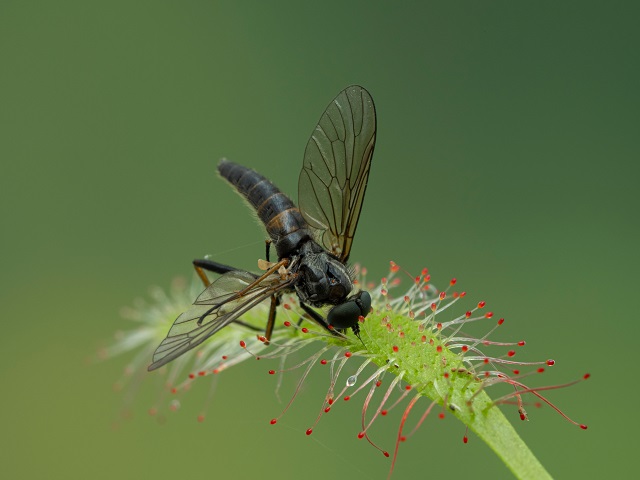
How Do Venus Flytraps Work? – Snap Trap
It is native to the boggy areas of North and South Carolina, including certain wetlands. Since people have been fascinated with these plants for so long, they have collected many of them, consequently becoming endangered.
In the leaves of Venus’ Flytrap, you will find short and stiff hairs called triggers or sensitive hairs. The two lobes of the leaves snap shut when anything touches these hairs and bends them. This traps whatever is inside the leaf.
It will take less than a second for the trap to close. For a moment, though, the trap is not fully closed. In fact, it is believed that it remains open for a few seconds so that it can allow very small insects to escape because they would not provide enough food otherwise. The trap reopens after about twelve hours if the object isn’t food, such as a stone or nut. The trap will ‘spit’ the object if it is not food.
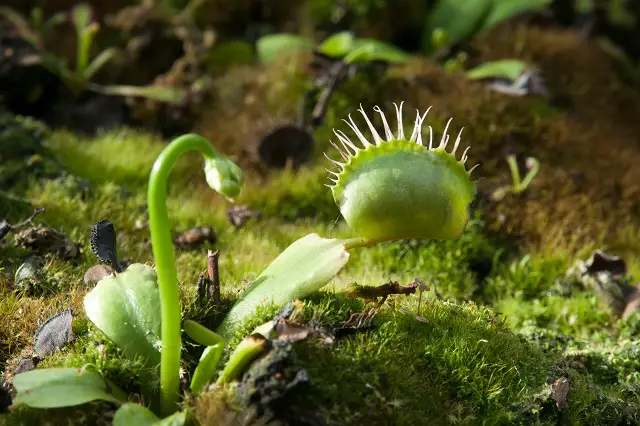
How Do Pitcher Plants Work? – Pitfall Trap
The Nepenthes is a tropical carnivorous plant species that grows in tropical regions, such as South-East Asia, Southern China, the Philippines, Madagascar, and northern Australia. In addition to the many Nepenthes species native to sweltering jungles, there are also many Nepenthes (Pitcher Plant) species that inhabit higher altitudes and mountainous environments. In these environments, temperatures are a lot colder.
Through the subtle smell of sweet nectar and the bright colors of the hollow chamber, insects are attracted to the plant’s pitchers. In the interior, the surface is slippery, and the hairs pointed downwards will cause the insects to slide into a pool of liquid. They will sink and drown in digestive acid. Clusters of chlorophyll-deficient cells create the window-like structures on the tops of the Pitcher, letting light into the chamber, which attracts insects.
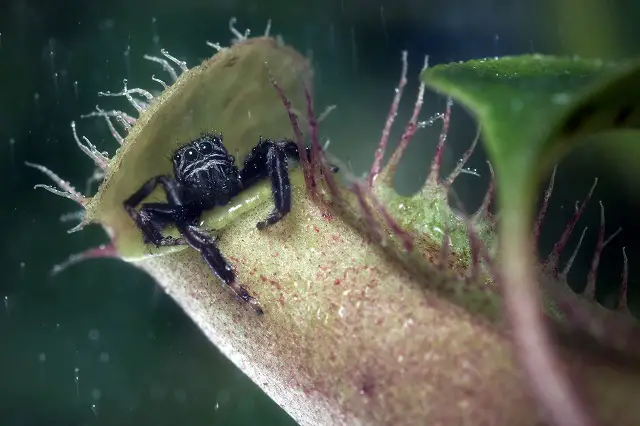
How Do Cobra Plants Work?- Lobster-pot trap
In Southern Oregon and Northern California, the Cobra Plant (Darlingtonia) grows naturally. Despite being closely related, cobra plants exhibit unique physiological characteristics from their cousin Sarracenia pitcher plants. Cobra pitcher plants have curved heads that open downward, unlike all other pitcher plants; this, combined with the pointed leaves at the mouth of the plant, gives the plant its name and makes it look very similar to hooded snakes.
Cobra Plants have traps that look very similar to those used for catching lobsters. Insects can easily find and enter a lobster pot from the outside, as the entrance has a large opening. On the other hand, the insects will have a hard time trying to locate the exit from the inside.
Once inside, if the prey finds the entrance or figures it out, they can easily leave. Lobster traps differ from other traps in that they have a dark opening while the remainder of the trap is lit by clear cells called areoles. Light-orienting prey is unlikely to find the entrance and often end up in the pitfall trap portion of the leaf.
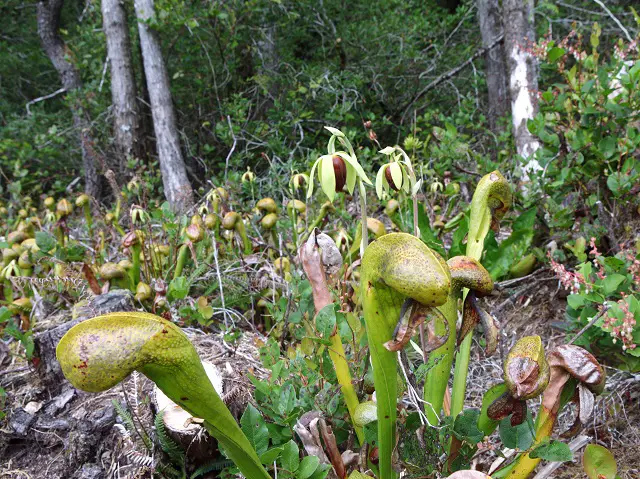
How Do Bladderworts Work? – Bladder Traps
The bladderwort is found throughout the world in lakes, rivers, streams, and soils soaked in water. Several of the species of bladderwort are invasive species. Bladderwort plants lack roots and usually bear leaves on a horizontal stem is simple or divided forms. Hollow underwater structures, called bladders or traps, have flexible doors or valves that keep them from opening.
Water is transferred from the inside of the bladders to the outside of the bladders through a biological process, resulting in low pressure inside the bladders. Suppose a small animal triggers the bristles that protrude from the door’s surface. This will then cause the trap to suddenly open, and a quick inflow of water will then pull the prey into the trap. After about a third of a second, the lid shuts closed, the animal is digested, and the process is completed.
